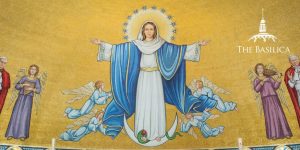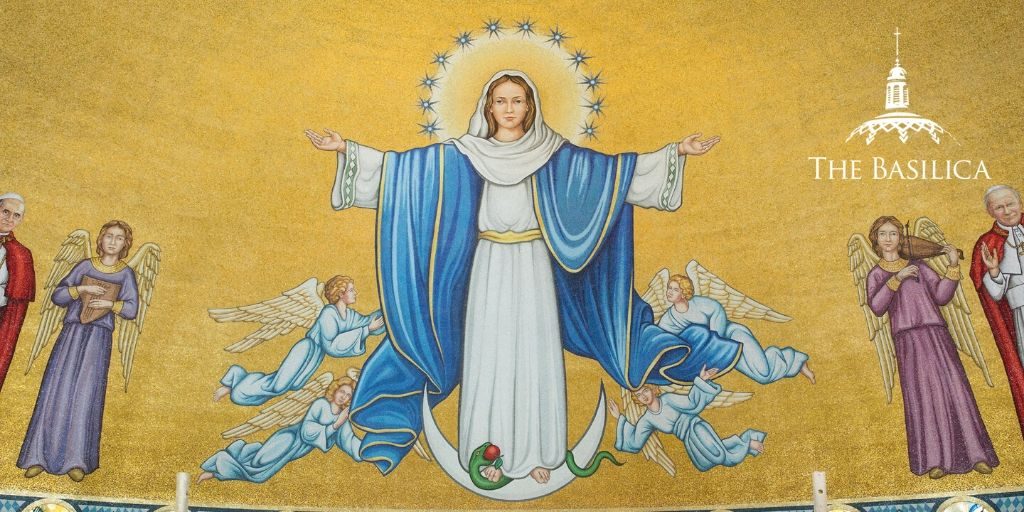
International Women’s Day is March 8, celebrating the accomplishments of women around the world. The Bible is filled with stories of extraordinary women of faith, serving as an inspiration for our own devotion. We invite readers to explore the stories of seven women of the Bible and where they are portrayed in the Basilica – the home to the largest collection of contemporary ecclesiastical art in the world.
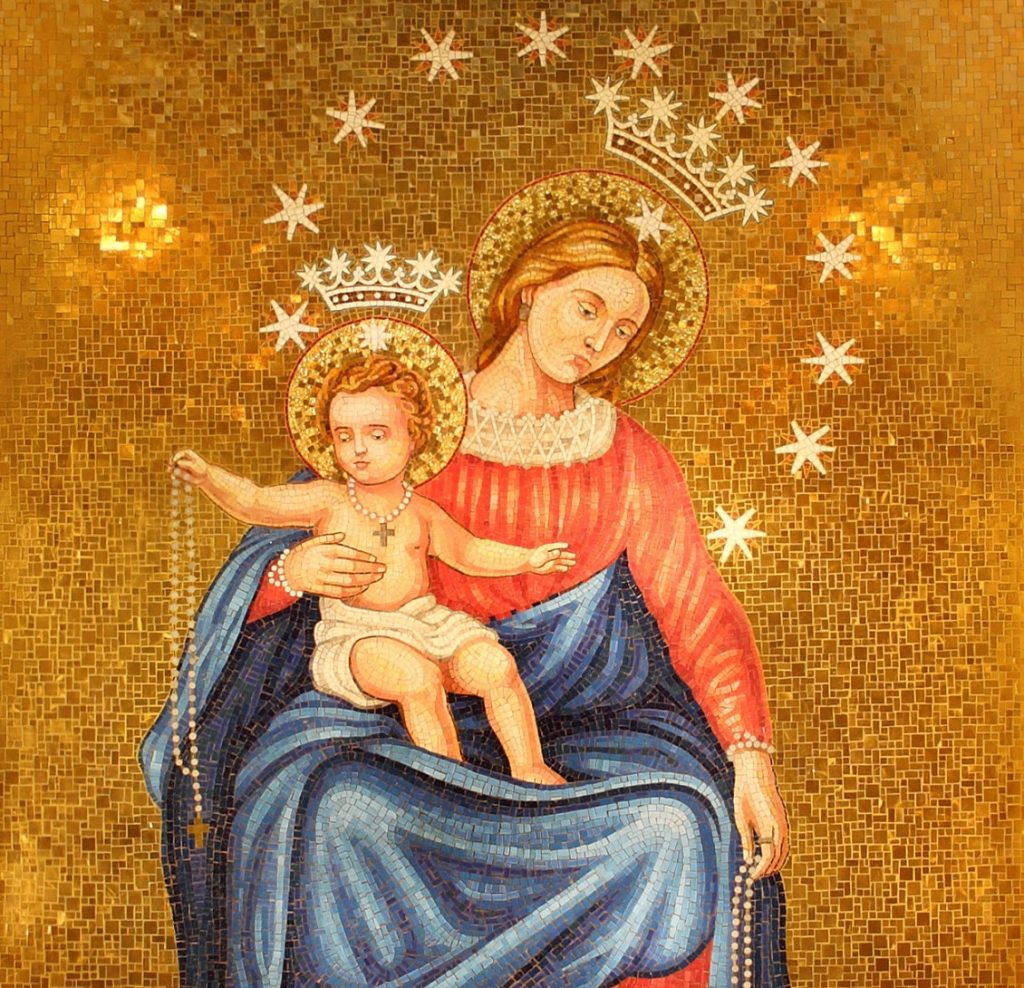
The Blessed Mother
There is one woman in particular whom we seek to honor first and foremost. The most well-known woman in the Bible, Mary conceived Jesus, the Son of God, through the Holy Spirit. As America’s preeminent Marian shrine, the Basilica is dedicated to the patroness of the United States, the Blessed Virgin Mary under her title of the Immaculate Conception. Mary’s Shrine is home to more than 80 Marian chapels, oratories, and sacred images honoring the Blessed Virgin Mary.
We honor Mary’s tender example of humility and her perfect acceptance of God’s will. We hope that the faithful example our Blessed Mother demonstrated each day of her life fosters a deeper devotion to our Lord in your life.
Many examples of Mary depicted as Mother of God – the Theotokos – are featured throughout the Basilica. These fall into two main categories: the Hodegetria – “she who shows the way” or “the guide”; and the Eleousa – “the one who shows mercy” or the “tender touch.” One example of Mary as the Eleousa is in the Our Lady of Pompei Chapel.
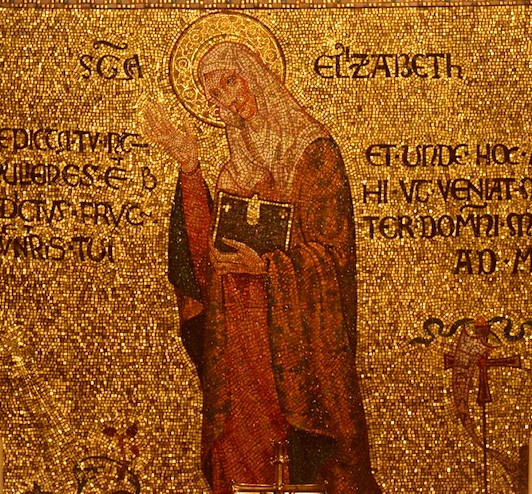
Saint Elizabeth
Saint Elizabeth was barren until late in her life, but God had not forgotten her. When she was advanced in age, she gave birth to John the Baptist. Elizabeth was also related to Mary, whose pregnancy story intersects with her own. It was upon Mary’s visit that Elizabeth called Mary blessed, and Mary responded with what we now know as the Magnificat.
Saint Elizabeth is featured in the Basilica in the South Entrance, the St. Elizabeth Chapel, in the Pewabic rondel ceiling in the Northern Apse of the Crypt Church, in the East Chancel Clerestory Window, and in the Rosary Garden.
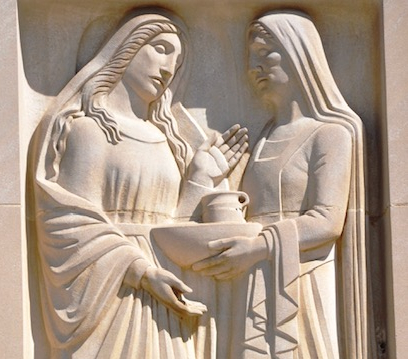
Mary and Martha
The Gospel of Luke includes what is arguably the most well-known story of Martha and her sister Mary, when they had Jesus to their home for dinner. Once he arrived, Martha was still busy preparing the food and was upset that Mary did nothing to help her. But Jesus told Martha that Mary had chosen “the better” part in listening to his teaching.
Martha demonstrated remarkable faith later, when her brother Lazarus became ill and died prior to Jesus’ arrival. Even though her brother was already dead, Martha had faith that as Messiah, Jesus could still perform a miracle with Lazarus’ life – and he did.
Mary and Martha are portrayed in the panels above the South Entrance of the Basilica.
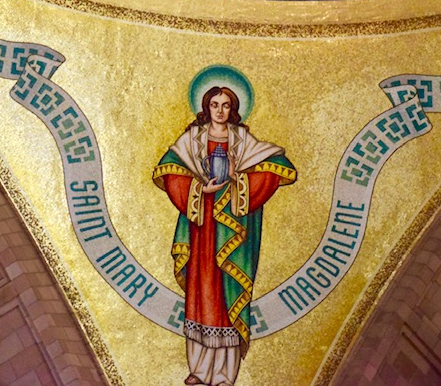
Saint Mary Magdalene
Mentioned 14 times in the gospels, Saint Mary Magdalene was a devoted follower of Jesus, who accompanied him through pivotal moments of his ministry – on his last trip to Jerusalem, at the cross, and discovering his resurrection at the tomb. Mary Magdalene is especially significant as the first witness to see Jesus following the resurrection. In a time when women were regarded as second-class citizens, God gave Mary – a woman – a highly significant honor by appearing to her first and charging her to spread the news of his resurrection.
Mary Magdalene is depicted in the Basilica in an East-Chancel Clerestory window, the Redemption Dome Mosaic, and the Northwest Pendentive of the Redemption Dome.
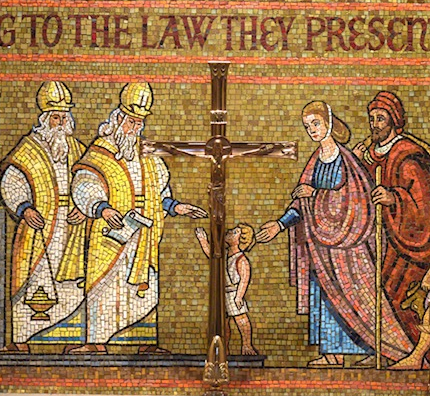
Hannah
Hannah was barren for many years, but she continued to pray to God for a child, crying out in her despair. She vowed to the Lord, “O Lord of hosts, if you look with pity on the hardship of your servant, if you remember me and do not forget me, if you give your handmaid a male child, I will give him to the Lord all the days of his life” (1 Samuel 1:11). The Lord heard her plea, and blessed her with the child Samuel, whose life she dedicated to the Lord. Samuel went on to become a great leader.
Hannah is portrayed in the West Apse in the Presentation Chapel.
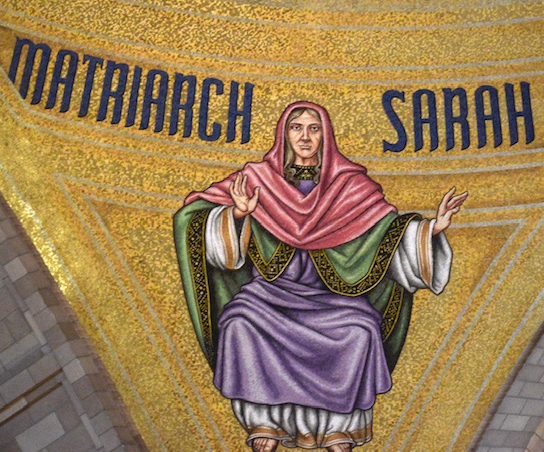
Sarah, Matriarch
God promised Sarah and her husband Abraham that he would make them a great nation – that their descendants would be as numerous as the stars (Genesis 15:4-5). But as they grew advanced in years, Sarah remained childless. When Sarah was 90 and Abraham 99, God promised them that she would bear a son within a year. They laughed, wondering how this could be possible. Yet God was faithful, and Sarah bore Isaac – whose name means “laughter.”
Sarah is portrayed in the Basilica in a pendentive of the Incarnation Dome mosaic, as well as the South Entrance of the Basilica.

